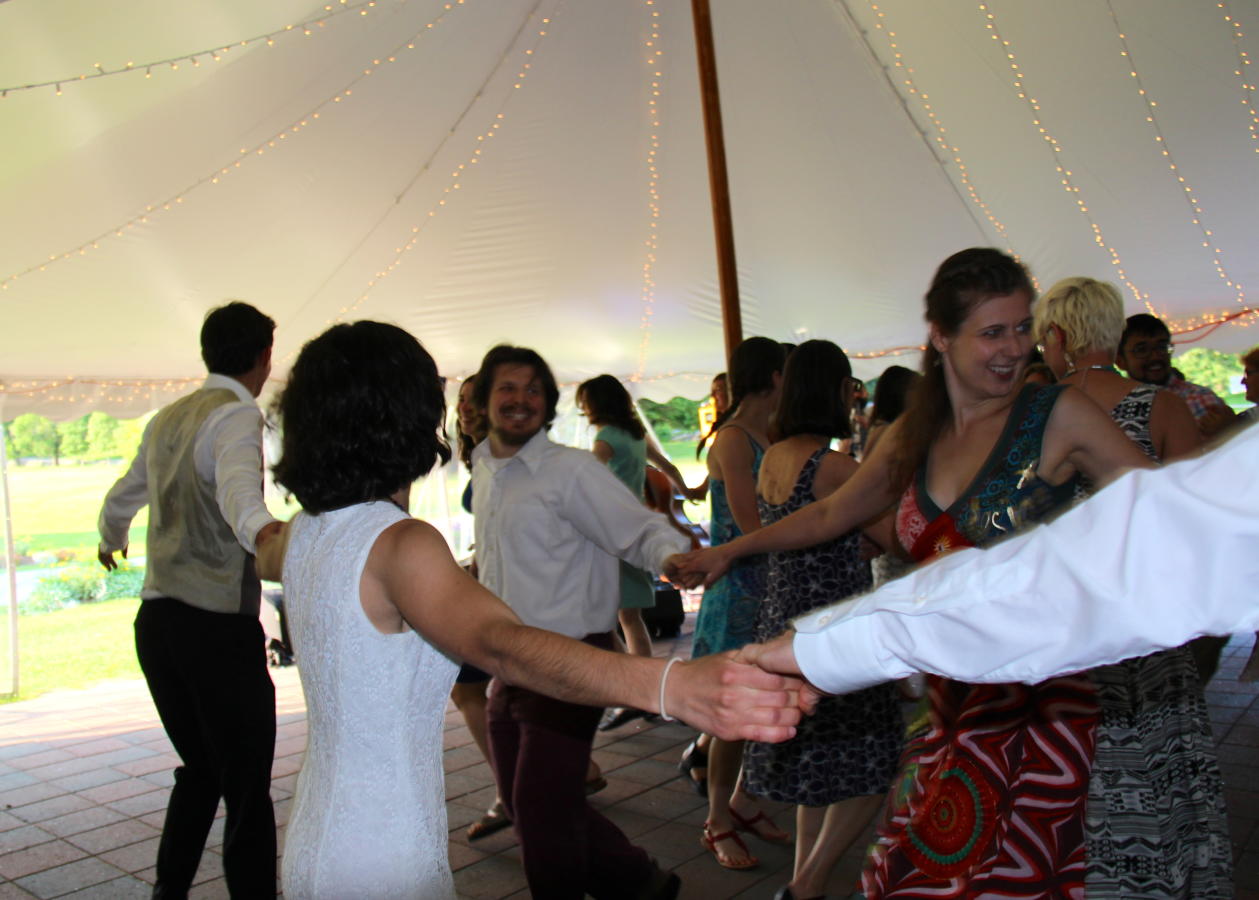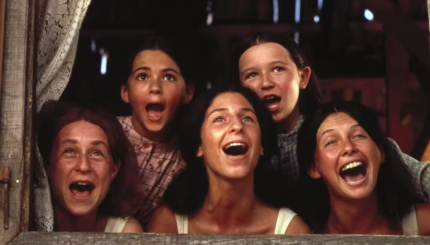Nothing is more emblematic of the Jewish wedding than the hora. Love it or hate it, the hora has joined the ranks of the rings, the seven blessings, and the broken glass as an essential component of the wedding ceremony, without which its Jewishness seems incomplete.
Are you planning a Jewish wedding? Let us help out! Sign up for Breaking the Glass, an email series that will help guide you to the wedding that’s right for you!
As a semi-professional klezmer musician, I have seen my share of wedding horas. Although the klezmer world attempts to anchor itself firmly in tradition, I am not a historical purist — I am happy to let the hora ritual grow and evolve to find its place in the modern Jewish world.
And yet I assert that not all horas are created equal! The hora can be a vehicle through which the guests can physically express the intensity of their joy over the union of the bride and groom (or bride and bride, or groom and groom).
With your help, My Jewish Learning can provide endless opportunities for learning, connection and discovery.
Some of the basic techniques for achieving hora excellence are fairly intuitive.
- First and foremost, make sure someone knows that it is their job to make the hora happen. You can appoint a few people or just one very energetic person.
- Make sure they know where they can find several sturdy chairs with armrests — no one wants to get lifted in a folding chair.
- Make sure they have the music they need, which can be a live band (that is confident in their ability to play for Jewish dancing) or recorded music (mixed to play without song endings).
- Starting with Hava Nagila is a great way to get people on their feet; moving from Hava Nagila into other klezmer or Israeli dance tunes will keep guests (and musicians!) from getting bored.
- Be realistic about timing and energy levels — if you want to go on for longer than 15 minutes, you’ll want the music to slow down at some point in the middle, and you may want to encourage your friends to plan some shtick to fill that time.
But even the best-laid hora plans often beget lackluster horas. The missing ingredient is a nugget of Jewish wisdom grounded in a long and rich history of Eastern European community dance that modern Jewish America seems to have largely forgotten. So I must now mount my soapbox to correct the misconception that has kept countless horas from fulfilling their potential:
A good hora must be a LINE, not a CIRCLE!
Figure A illustrates the classic circular hora. As more guests join the circle, space constraints force them to pack together, limiting the size of their steps and thus slowing circulation, sometimes to a total standstill. To a certain extent, this congestion can be relieved by forming an inner circle. However, the more elegant solution is illustrated in Figure B: the spiraling line.

In the spiraling line configuration, a single line leader (red) trails a long line of dancers from his or her right hand and circles the center moving leftward, naturally forming as many layers of dancers as necessary to accommodate everyone who wants to participate. New dancers may insert themselves into any position in the line except the front, but the ideal insertion point is the end of the line, where new dancers may be added without slowing anyone else down. The pace of circulation is established by the leader, and since the inter-dancer spacing remains sufficient to allow for big steps, this pace may be very fast indeed.
In addition to setting the pace, the line leader can make decisions that create a more interesting dance experience for everyone. A popular option is to double the line back (Figure C, also top photograph) such that all of the dancers pass each other face-to-face and have the opportunity to smile at friends and family members and kvell over the beautiful community that has come together around the couple. Other options include excursions off the dance floor and among the dinner tables, the into-the-middle-and-back move, and (for the more advanced leader) fancier footwork. These embellishments are difficult to make by hive-mind, but can be implemented quickly and fluidly by a lead dancer if the rest are paying attention. Once the guests understand the rules, a whole new range of possibilities opens up: the line can be broken into multiple lines with multiple leaders and reattached at the leaders’ whims.
I have already pointed out the importance of appointing dance leaders in advance. Make sure these people understand the principle of the hora line. At the leading end of a line, your leaders have the influence and flexibility they need to get the dance started, model good technique, and set the speed, trajectory, dramatic arc, and ultimately mood. At my own wedding (a wedding without any particular concentration of wedding dance enthusiasts), I took this role upon myself, and our guests are still talking about that hora four years later.
Go forth, spread the gospel of the spiraling line hora, and breathe life into this cherished Jewish tradition.



